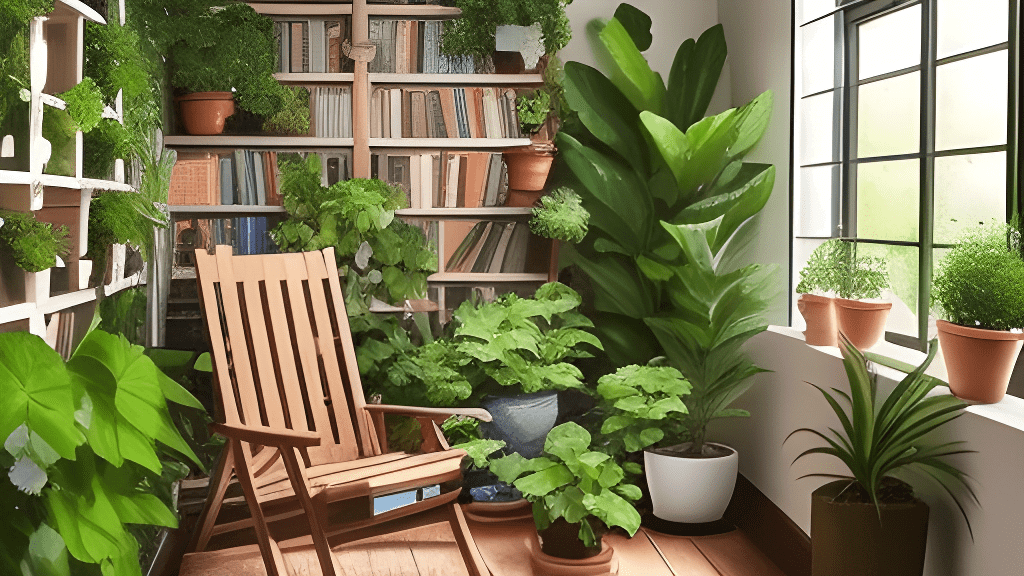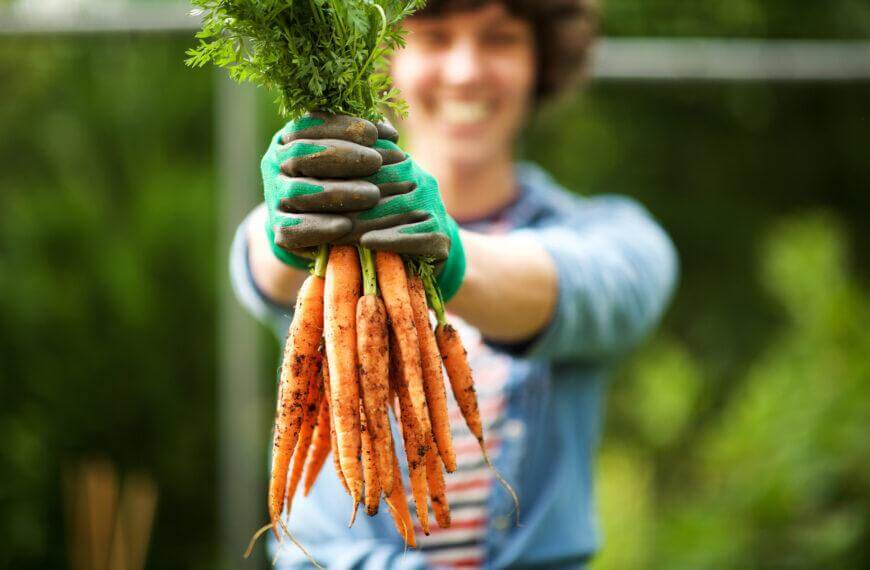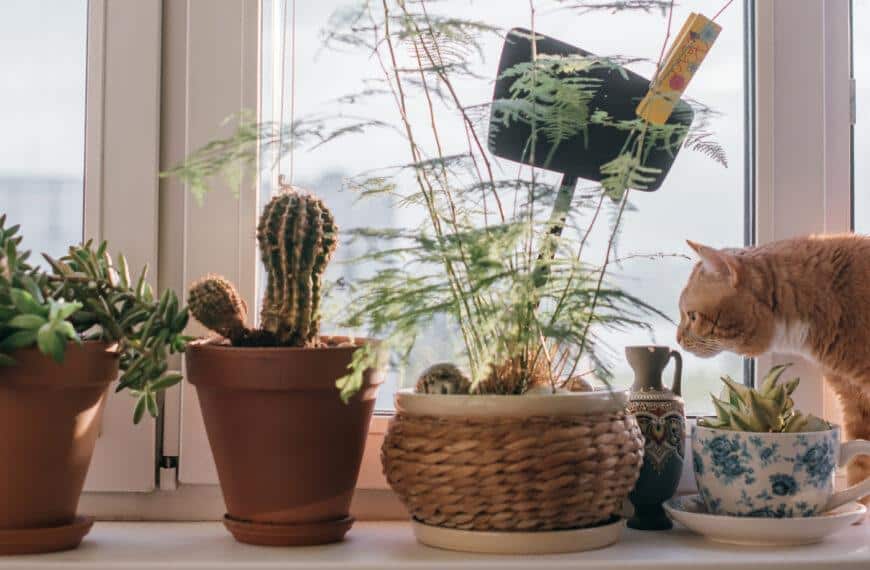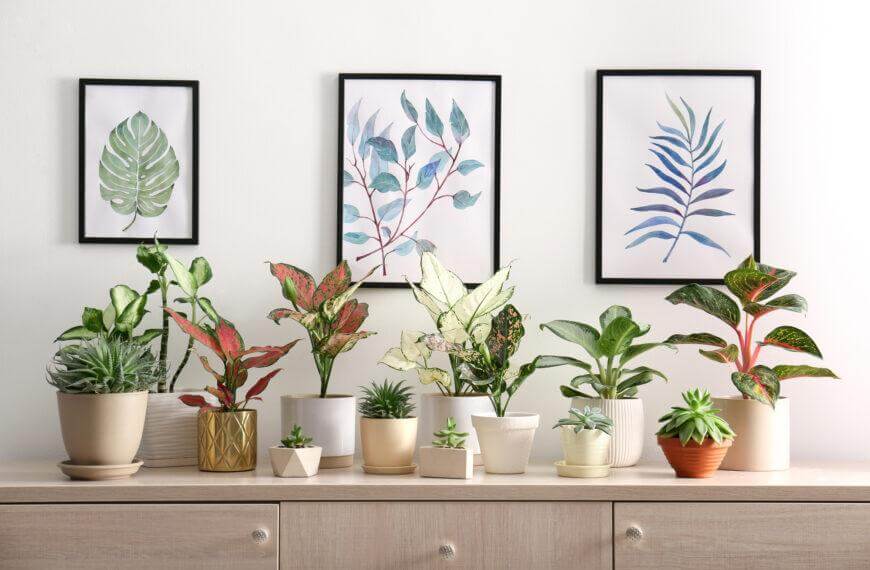Table of Contents
To plan your indoor garden oasis with the right design ideas and inspirations, you need to choose the right space, assess the amount of natural lighting available, and determine your budget and timeframe. These sub-sections will help you optimize your space and resources for creating an indoor garden that fits your needs and preferences.
Choosing the Right Space for Your Indoor Garden
Creating the Perfect Indoor Garden Space
When making an indoor garden, pick a spot with enough natural light for your plants. Each one has its own lighting needs, so make sure you get enough sun or buy grow lights.
Also, you must choose a place with good air flow and temperature control. Avoid drafts or extreme temperatures as they can hurt your plants.
Think about accessibility when picking a spot. You want to be able to easily water and maintain your garden, and easily access tools and supplies.
Did you know NASA recommends certain houseplants for purifying air? English Ivy, Peace Lily, and Spider Plant are some of them.
Time to get those sunglasses! Or just leave your plants in the shade.
Assessing the Amount of Natural Lighting Available
Evaluating Natural Light for Optimal Indoor Garden Oasis.
Maximizing your garden’s success starts with assessing natural light. Different plants need varying light, so it’s essential to optimize the hours and intensity. Time must be taken to evaluate the lighting conditions around the chosen location.
To gauge natural light, determine if windows provide ambient or direct sunlight. East-facing windows get morning sun, while west-facing gets afternoon rays. South-facing windows get intense full-day sunshine, needing shade cloth to protect from heat. North-facing windows offer minimal sun all day.
Artificial lighting is key during cloudy days or winter months, yet good natural sunlight is required for optimal indoor garden cultivation. Balancing plant care and sunlight can help you create an indoor oasis.
Research shows that plants with enough natural light have higher nutritional value than those kept under artificial lights. (source: Journal of Agricultural and Food Chemistry)
Remember, the cost of an indoor garden oasis depends on the guilt you feel for killing your previous plants.
Determining Your Budget and Timeframe
When crafting your indoor garden, it’s vital to decide on a budget and timeline. Here are 6 must-haves to ponder:
- Evaluate the funds you have and choose how much you’re ready to use on plants, items and upkeep.
- Find out what type of indoor garden you desire (vertical wall garden, herb garden, etc.) and research the materials you need.
- Check the time you have to maintain the garden.
- Include the ongoing costs for plant care such as soil, fertilizer, water, and pest control.
- Add the expenses for lighting or climate control if required.
- Aim for a practical timeline that takes into account setup and maintenance.
Also, evaluate how frequently you may want to re-arrange your indoor garden. Is it going to stay in one spot or move around? By thinking about these queries early, you can make sure your decisions fit with your wants and aims. To finish, here’s a true story: A young woman was determined to create her indoor garden paradise no matter what the cost or time. But, when she honestly looked at the expenses, she knew it would put her in debt. She adjusted her budget and made a stunning space that was within her means.
Transform your home into a luscious paradise with these tips for constructing an indoor garden oasis that will make your neighbors go green with envy.
Designing your Indoor Garden Oasis
To design your indoor garden oasis with the right blend of plants and aesthetics, explore the three solutions: selecting the right plants for your oasis, choosing the right planters and containers, and incorporating hardscape elements into your garden. Each solution helps create a unique, personalized oasis in your living space.
Selecting the Right Plants for Your Oasis
Want to make your home an indoor paradise? Glam it up with the perfect flora!
Here are some tips to help you pick:
- Check your climate – lighting, temp and humidity
- Decide if you want ornamental or edible plants
- Decide on care requirements – watering, sunlight, soil
- Think about colors, textures and size
- Research plant toxicity for family safety
Plus, add magical touches like Chinese evergreens to reduce formaldehyde. Snake plants reduce carbon dioxide. Spider plants need light. English Ivy soothes stress.
Indoor gardens have been around for thousands of years – even the Hanging Gardens of Babylon! Put your plants in regal planters and enjoy the calming atmosphere of greenery in your home.
Choosing the Right Planters and Containers
Planters and containers are important for indoor gardening. They help create an attractive environment and foster plant growth. Here’re three things to consider when selecting them:
- Material: The material should be strong and durable to support the plants. Ceramic, concrete, metal, or terracotta are great options.
- Size: Choose the right size so there’s room for the roots to grow. It should provide space for growth and root development.
- Drainage: Make sure the container has drainage holes at the bottom to avoid overwatering.
You need to pick pots that go with your plants’ characteristics. Each plant is special, so you need specific containers for each type of foliage.
It’s essential to have the right storage for successful indoor gardening. This not only helps the plants grow but also looks great with your interior design – creating an incredible indoor oasis.
Hanging baskets, vertical wall gardens, or self-watering pots are multi-functional and can save space. Plus, they’re decorative too!
The right planter and container will make a huge difference in the overall look and feel of your indoor garden. Plus, it’ll help sustain the health of your plants! Who needs a rock garden when you can have a garden with actual rocks?
Incorporating Hardscape Elements into Your Garden
Transform your indoor garden into a cozy oasis with hardscaping features! Rocks, stones and wooden sculptures add texture and interest to the space. They also help maintain moisture, so you don’t need to water your plants as often.
Don’t forget to plan strategically: a qualified professional can help you place heavy fixtures without damaging the structure or flooring beneath it. Outdoor landscaping suggests these elements can prevent flooding and erosion, reducing maintenance needs.
Homeowners nowadays are incorporating hardscaping features into their indoor gardens for a luxurious living space. So, don’t miss out – learn how to install these features for your own tranquil paradise!
Creating a Relaxing Environment in Your Indoor Garden Oasis
To create a peaceful space in your indoor garden oasis, incorporate water elements, natural scents and essential oils, and enhance the air quality with houseplants. In this section of “Creating an Indoor Garden Oasis”, you will find design ideas and inspirations that will help you relax and rejuvenate in your serene and calming indoor garden.
Adding Water Elements
Incorporate aquatic elements in your indoor garden to create a serene atmosphere! Here is a 5-step guide.
- Choose the right type and size of water feature for your garden.
- Pick a spot with an electric and water source. Make sure humidity won’t damage furniture.
- Drain out stagnant water often. Especially when it has algae, debris or smells bad.
- Plants like bamboo, ferns, and lilies help purify water and make your space greener.
- Add natural light to reflect off a fountain. Put stones in small pools for texture.
Also, add auditory elements like wind chimes or musical bowls near water sources. The sound is soothing.
Pro-Tip: Install ultrasonic foggers for mist-like vapors to imitate rain. This helps humans and pets breathe better and reduce stress.
Make your indoor garden even more special with essential oils and natural scents!
Incorporating Natural Scents and Essential Oils
Transform your indoor garden into a peaceful oasis by infusing it with natural scents and essential oils! Here are some ideas to get you started:
- Use diffusers to spread calming scents.
- Grow lavender, mint, and sage for aromatherapy and beauty.
- Light soy-based candles with natural fragrances like jasmine, rose, or sandalwood.
- Add potpourri or dried flowers for natural scents.
- Create soothing plant combinations with warm colors or light pastels.
Go beyond these basics to make your oasis even more tranquil. Try unique aromas and colors to find your peace zone. Plus, peppermint is said to have been popularised by Hippocrates and is known to have therapeutic benefits – so don’t forget to add some of that too! Finally, here’s an excuse to add more plants to your collection!
Improving Air Quality with Houseplants
Houseplants are an effective way to enhance indoor air quality. They absorb pollutants like benzene, formaldehyde, and ammonia. Plus they release oxygen during photosynthesis which helps you feel relaxed. Houseplants also maintain humidity levels in dry weather, and studies show that patients in hospital rooms with plants recover faster.
Did you know 15-18 houseplants can purify the air? Pick low-maintenance plants that match your style. Before you get started, research each plant’s needs for water, lighting, and space. Remember, having green thumbs just means you have dirt under your nails!
Maintaining Your Indoor Garden Oasis
To maintain your indoor garden oasis in the best way possible along with the [title] with [sub-sections] as the solution. Creating a watering and feeding schedule, monitoring and adjusting lighting conditions, and ensuring proper humidity levels are all important aspects of maintaining a healthy and thriving indoor garden.
Creating a Watering and Feeding Schedule
Keep your indoor garden happy with a regular feeding and watering schedule. Remember these three tips:
- Water plants deeply once a week and discard any leftover water in the saucer beneath each pot.
- Fertilize carefully, according to the label. Too much can hurt your plants.
- Different plants have different needs. Do your research and make a schedule that works for them.
Temperature and light also influence your plants’ health. Keep an eye on them for adjustments. Don’t let your oasis wither away! Follow a feeding and watering schedule tailored to your plants and enjoy their beauty for years. And don’t forget to give them proper lighting too!
Monitoring and Adjusting Lighting Conditions
Grow Plants Right!
Light is key for the health of plants. It’s important to monitor and adjust the light intensity for your particular plants. Here are some ranges of light intensity for common house plants:
- Basil: 500-700 Foot Candles (Fc)
- Chives: 200-400 Fc
- Lettuce: 250-1000 Fc
- Spinach: 400-600 Fc
- Tomatoes: 3000-8000 Fc
Measuring the light intensity accurately requires a lux meter. Place it about 6 inches away from the topmost leaves.
A friend’s tomatoes weren’t doing well until she adjusted the lighting. Then they grew plump and scrumptious. Don’t forget humidity too!
Ensuring Proper Humidity Levels
Ensure Perfect Moisture for Your Indoor Garden Oasis!
To maintain your indoor garden oasis, follow these tips:
- Monitor humidity levels using a hygrometer. Adjust as needed.
- Don’t overwater. Group plants with similar moisture needs.
- Humidify a dry environment with a humidifier or pebble tray.
- Reduce humidity by opening windows or using a dehumidifier.
- Research individual plant care instructions.
Indoor gardening has been around for centuries, and is known for its therapeutic benefits. To experience joys of this ancient hobby, nurture your oasis.
Your oasis is so cool, it may need a velvet rope to keep the visitors away!
Showcasing Your Indoor Garden Oasis with Decor
To showcase your indoor garden oasis with decor, you need to select the right furniture and accessories, incorporate natural textures and colors, and opt for innovative plant display ideas. It’s time to transform your interior space into a refreshing and nature-inspired haven.
Choosing the Right Furniture and Accessories
When styling your indoor garden, the right furniture and accessories can make a big difference! Cozy armchairs or poufs can transform your space into a sanctuary. Bright planters, vases and artworks can create a unified theme. Add style with lighting fixtures or dimmer switches for atmosphere. Incorporate organic materials like wood, bamboo, or rattan for warmth and texture.
Plant stands and shelving can provide extra storage. A cool trick is to mix bigger plants with smaller ones. Or, use different heights of shelves or staggered displays while keeping proportionate symmetry. Finally, bring natural textures and colors to your indoor garden oasis to make it bloom!
Incorporating Natural Textures and Colors
Bring out the serene touch of nature in your indoor garden oasis!
Choose wood, stone, jute, and wicker materials to create a soothing atmosphere.
Include plants with different shades of green plus vibrant colors.
Add terracotta planters and cement pots for textured foliage like ferns and succulents.
Woven baskets for storage, and hang macrame plant hangers for more texture.
Earth tones like burnt sienna or forest green, and don’t be afraid of bolder ones like deep blues or fiery oranges!
These natural materials not only elevate aesthetics but also the air quality.
Place potted plants near windows for natural lighting and dimmable lights for a cozy ambience in the evenings.
By blending textures and colors from outside and greenery inside, you’ll have an exquisite indoor garden oasis that epitomizes serenity and communicates your connection with nature.
Innovative Plant Display Ideas.
Bring life to your living space with inspiring plant display ideas! There are five creative ways to show off your plants:
- Vertical wall gardens
- Hanging planters
- Terrariums
- Pot stands/shelves
- Limited space plants (miniature succulents, air plants, or herb gardens).
For a unique look, use containers like mason jars, tea cups, or repurposed items such as crates and baskets. And for extra magic, add fairy lights around the planters. So don’t let your space go dull – bring it to life with these inspiring plant display ideas.
Frequently Asked Questions
Q. What are some ideal plants for an indoor garden oasis and their benefits?
A. Spider plants, peace lilies, pothos, snake plants, and ferns are great options for an indoor garden oasis, which can improve air quality, reduce stress, and enhance your mood.
Q. How do I design and choose the right plants for my indoor garden oasis?
A. Consider factors such as lighting, space, and theme, and use a guide or tool for selecting suitable plants. Complement plant colors and textures and add decorative accessories.
Q. What are the best containers for indoor plants and how do I care for my garden?
A. Choose containers with drainage holes made of breathable materials like clay or ceramic. Water plants as needed, provide sufficient sunlight, and clean leaves regularly.
Q. Can I create an indoor garden in a small space or if I have a plant disorder?
A. Yes, use hanging planters, shelving units, or vertical systems for limited space. Gardening can be therapeutic for disorders like ADHD or anxiety, but set realistic expectations.
Q. What are some low-maintenance houseplants and how can I purchase an indoor garden kit?
A. Pothos, spider plants, and philodendrons are low-maintenance options. Purchase indoor garden kits online or at local nurseries, reviewing components to suit your needs.
Q. Can I create an indoor garden oasis with fresh produce and how do I manage waste?
A. Yes, indoor gardens provide fresh produce year-round. Choose plants suitable for indoor environments and have a plan for waste and composting.
Q. What equipment or tools do I need for my indoor garden oasis?
A. Basic tools for potting and plant care are helpful, but no fancy equipment is required. A comfortable chair and lamp are useful for tending to plants.
Q. How can I improve my plant care skills in my indoor garden oasis?
A. Adjust your care routine as needed, and consider starting with low-maintenance plants. Experiment, learn, and don’t be discouraged by initial challenges.




